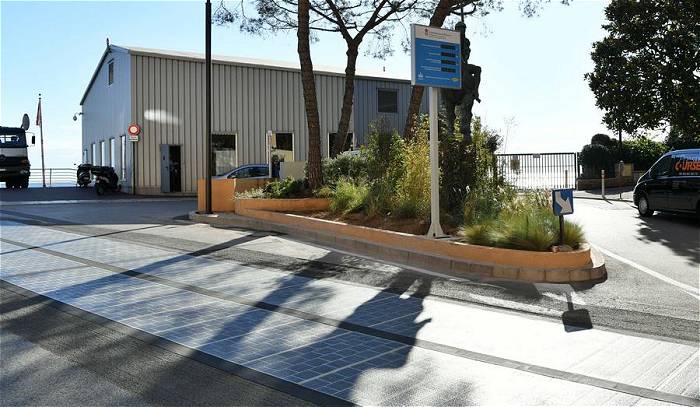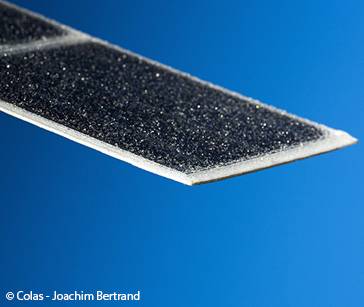
Heavy shading is perhaps not the best promo shot for a solar road | Image : Monaco Government
Despite the technology’s challenges, the solar roads concept captured the public’s imagination a few years back – and projects have been ongoing.
In sovereign city-state Monaco, the Department of Urban Amenities recently installed a test section of solar road.
“We are conducting a full-scale test of this new solar panel technology, which would transform roadways – public spaces – into a source of renewable energy,” said Jean-Luc Puyo, Director of Urban Amenities. “It is possible to imagine that, in future, other roads in the Principality will support our renewable energy policy.”
The installation features Wattway panels, which have been laid directly onto the road surface. Just a few millimetres thick, the paving is made up of 15-centimetre-wide solar cells coated with a substrate composed of resins and polymers. The coating is sufficiently translucent to enable sunlight to pass through, but resistant enough to withstand truck traffic.
Monaco’s government says the paving has 15% yield and 20 square metres of the road can generate enough electricity to power an average household (excluding heating).
The first Wattway-based solar road was opened in Normandy, France last year. The one-kilometre pilot project consists of 2,880 photovoltaic panels that were expected to generate an average of 767 kWh of electricity per day, with peaks up to 1,500 kWh per day during the summer months. As with most new technology, the rollout was very expensive. The cost of the project was reportedly €5 million, which is around AUD $7.67 million at current exchange rates.
There haven’t been any further updates on the project from Colas, the company that makes Wattway, since that time.
Another Wattway project opened in December last year. Fifty square meters of its solar panels were installed at the Georgia Visitor Information Center in West Point, USA.
More recently, a larger (non-Wattway) solar road project installed in China is expected to be opened in the coming days. A 2-kilometre section of Jinan Ring Expressway, which connects the Chinese cities of Jinan, Shandong and Guangzhou, Guangdong, has been fitted with solar cells.
According to People.cn, the experimental road surface consists of three layers: the top layer is a form of “transparent concrete”, the middle layer contains the solar cells and the bottom layer provides a moisture barrier.
Reactions to solar roads have been strong – both for and against. Some see the concept as a great way to make better use of the significant amount of the Earth’s surface that is taken up with roads; others see view it as a very expensive, impractical and inefficient application of PV, particularly while so many rooftops in towns and cities remain bereft of solar panels.
Some critics state a better, cheaper way to combine solar electricity production and roads is elevated PV installation over roadways, on medians and by roadsides.


 RSS - Posts
RSS - Posts



Speak Your Mind